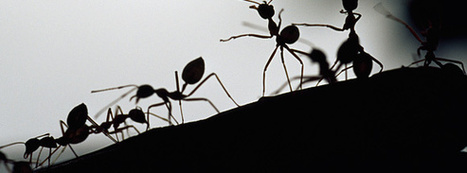Life is network based. Millions of years of evolution have allowed the natural world to develop what can be argued to be the most tried, tested and optimized protocols in existence: biological networks. The ability for Internet of Things (IoT) market stakeholders to interpret and effectively apply principles derived from the study of biological networks will lead to increased asset and resource productivity, as well as greater system resilience.
Research and publish the best content.
Get Started for FREE
Sign up with Facebook Sign up with X
I don't have a Facebook or a X account
Already have an account: Login
 Your new post is loading... Your new post is loading...
 Your new post is loading... Your new post is loading...
|
|













